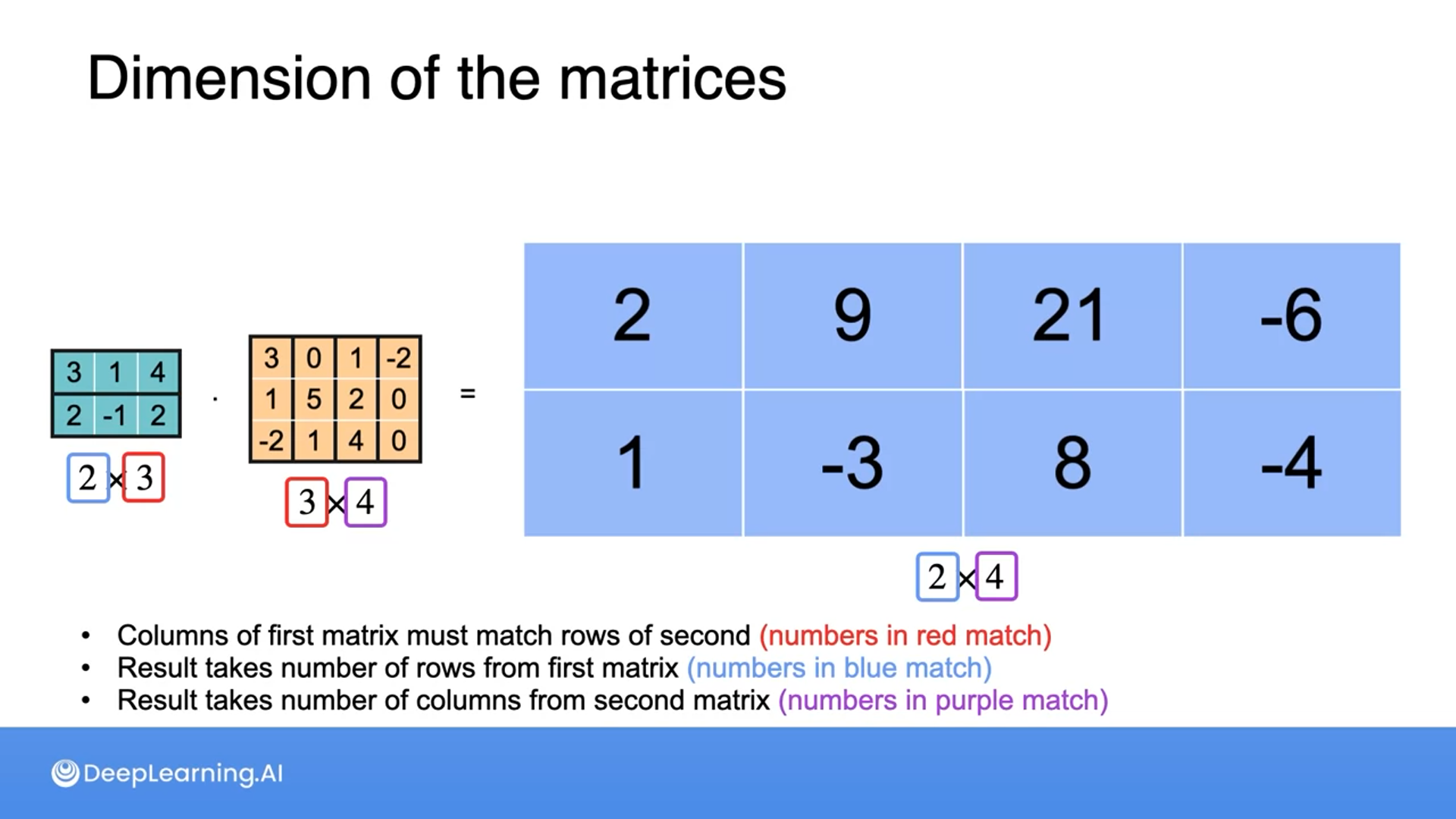Vectors and Linear Transformations
Linear Transformations
Matrices as linear transformations
A linear transformation is a way to send each point in the plane into another point in a very structured way



So with the given square on a plane, we apply the dot product of each point to a matrix and get a transformed matrix
Linear transformations as matrices



If the elements of the matrix are unknown and the coordinates of two figures on the plane are known, the first column of a matrix will be the linearly transformed vector from (1, 0) and the second column will be the linearly transformed vector from (0, 1)
Matrix multiplication
Matrix multiplication corresponds to combining two linear transformations into a third one







What value will be in the cell in the bottom left corner of this matrix after completing the multiplication?
1
You need to take the dot product of the second row of the first matrix, and the first column of the second matrix. (2 * 3) + (-1 * 1) + (2 * -2) = 6 - 1 - 4 = 1.

The identity matrix
The identity matrix is a matrix with the diagonal values as 1 and the rest as 0
When a linear transformation is performed to another vector/matrix, it returns the same one


Matrix inverse
The inverse of a matrix is like the inverse of a number; when we multiply the original by the inverse, we get the identity matrix (matrix with all 0s except the diagonals are all 1s)
In linear transformation, the inverse undoes the transformation that the original matrix did (returns the plane to where it was at the beginning)



We can find the inverse matrix by solving the system of linear equations

Answer
a = 1/4
b = -1/4
c = -1/8
d = 5/8


Answer
No solution

Which matrices have an inverse?

Not all matrices have an inverse
Singular matrices don’t have an inverse
We also know that the determinants of singular matrices are 0
Neural networks and matrices

Which of the following options is a correct set of points and threshold for the proposed problem?
- Lottery: 1 point. Win: 1 point. Threshold: 1.5 points.
- Lottery: 1 point. Win: 2 points. Threshold: 3 points.
- Lottery: 2 points. Win: 3 points. Threshold: 1.5 points.
1
Correct! The proposed solution correctly explains every case in the dataset.







We can think of the machine learning model as the matrix multiplication of data columns with the model (weights) and the output is determined based on whether it is over the threshold or not
This process is also called a perceptron




This can be seen with the AND operator and the visualization of the perceptron
All the information here is based on the Linear Algebra for Machine Learning and Data Science | Coursera from DeepLearning.AI
'Coursera > Mathematics for ML and Data Science' 카테고리의 다른 글
| Linear Algebra for Machine Learning and Data Science (13) (1) | 2024.06.04 |
|---|---|
| Linear Algebra for Machine Learning and Data Science (12) (1) | 2024.05.17 |
| Linear Algebra for Machine Learning and Data Science (10) (1) | 2024.05.06 |
| Linear Algebra for Machine Learning and Data Science (9) (1) | 2024.05.05 |
| Linear Algebra for Machine Learning and Data Science (8) (0) | 2024.05.04 |





 }
}